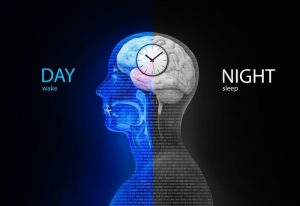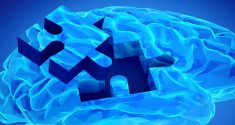Understanding chronobiology can help you to live a healthier life. But if you are like most people, you may be wondering what is chronobiology? Read on to learn more about this fascinating emerging science, and how you can use it to improve your health.
What is Chronobiology?
 Simply defined, chronobiology is the science that examines how all living creatures operate in cycles. This young science has quickly emerged as one of the most studied new fields, with implications that expand into nearly every life process. In general, the term refers to the natural day-and-night cycle that is greatly influenced by light and darkness. Innate biological timers which are in synch with the natural 24-hour rhythm of the earth control a number of rhythms and processes in the human body.
Simply defined, chronobiology is the science that examines how all living creatures operate in cycles. This young science has quickly emerged as one of the most studied new fields, with implications that expand into nearly every life process. In general, the term refers to the natural day-and-night cycle that is greatly influenced by light and darkness. Innate biological timers which are in synch with the natural 24-hour rhythm of the earth control a number of rhythms and processes in the human body.
For example, the body’s natural 24-hour cycles which occur at the cellular level are known as its circadian rhythm. During the deep overnight hours, the body’s rhythms slowdown in order to support sleep. As the sun begins to rise, the mind and body also begin to awaken and fire up, making this a good time to exercise or meditate to support this emerging wakefulness.
Most individuals find the mid-day hours the best time to engage in the most mentally taxing work of the day. This is when the body’s cycles are running at maximum capacity and able to best handle hard mental and physical work. By the late afternoon hours, most people begin to notice a slowdown that continues through the evening hours as the body prepares for sleep.
Three Basic Cycles of Chronobiology
Within the science of chronobiology are the three distinct cycles that fall under this umbrella.
Circadian Rhythms
As discussed earlier, circadian rhythms refer to 24-hour cycles that the body goes through in tandem with the rising and setting of the sun. As the most researched of the three basic chronobiology cycles, the bulk of science has focused on this body of research.
Infradian Rhythms
Infradian rhythms refer to cycles that last longer than 24 hours, repeating every few days, weekly, monthly or even as spaced out as far as annually. For example, lunar rhythms that follow the moon’s phases or bird migration patterns are both examples of infradian rhythms. A woman’s menstrual cycle is an example of an infradian rhythm that does not have any environmental connection.
Ultradian Rhythms
In contrast to the longer infradian rhythms, the ultradian rhythms are defined as the periods that are shorter than 24 hours, with frequencies that happen more than once per day. For example, most adults go through multiple exertion and rest cycles in a 24-hour period. These cycles can last several hours. Examples include digestion, hormone excretion and blood circulation. Some of these ultradian rhythms may last just milliseconds.
Diving Deeper Into Chronopharmacology
A subset of chronobiology is the science of chronopharmacology. This term encompasses the process of using the natural biological rhythms to learn how to more effectively dose and pace drugs to benefit the patient. For example, scientists can use this knowledge to time chemotherapy treatments for cancer patients to provide the greatest benefit. There has also been an emerging body of knowledge that ties the timing of chronotherapies for the treatment of conditions such as hypertension.
Chronopharmacology also studies the connection between a woman’s menstrual cycle and drug pharmacokinetics and pharmacodynamics. The menstrual cycle is a clear example of how the body is naturally prone to operate in distinct phases that are accompanied by hormonal changes of varying degrees. The timing of a drug’s administration can be significantly tied to its metabolism and clearance abilities, providing just another example of how a body’s natural cycles, including menstruation, can impact medication synthesis.
How You Can Use Chronobiology to Live a Healthier Life
There is no end to the ways that the science of chronobiology can help you live a healthier and more fulfilled life. Understanding more about chronobiology can help scientists to discover new ways to treat disease and illness in addition to helping humans to learn about how to maximize time and harness the most naturally productive parts of the day. Most important to medical researchers is the science of chronopharmacology and how to prescribe and administer treatments so that they have the greatest impact.

One Final Note
It is important to note that chronobiology is an emerging science that is just starting to be unveiled. Once scientists get a better handle on the complexities of this area of research, it is clear that the study of chronobiology will have a number of meaningful impacts in both the medical field and how humans live their lives.







